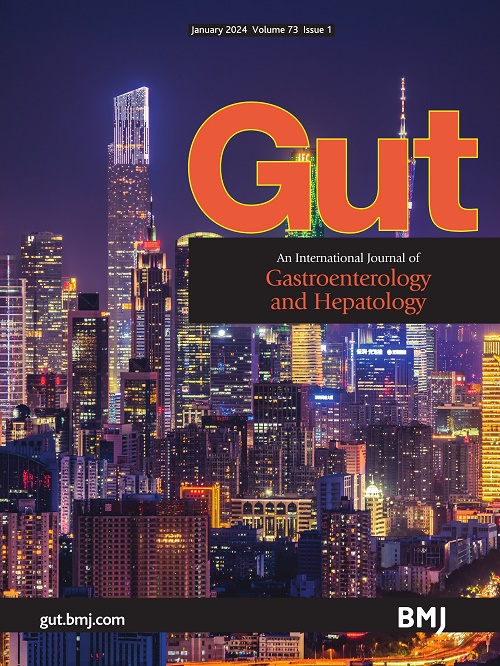New look on oats in coeliac disease
IF 25.8
1区 医学
Q1 GASTROENTEROLOGY & HEPATOLOGY
引用次数: 0
Abstract
The suitability and tolerability of oats has been a long-standing controversy in the management of coeliac disease (CD). In Europe and the USA, pure oats are recommended for their nutritional benefits, palatability and desire by the patients with CD, whereas Australia and New Zealand have excluded oats from gluten-free diets due to safety concerns. In Gut , the research group of Jason Tye-Din publishes a unique and ground-breaking study on the immune reaction and tolerability of oats in CD.1 It is well known and studied that the ‘gluten-like’ proteins of wheat, rye and barley are harmful in CD—but what about the close cousin oats? There is an issue of contamination of oats with other cereals, and the patients have been well educated to rely on uncontaminated oats—but is this really the whole story? This commentary delves into these findings and their implications for dietary guidelines and clinical practice. The investigators undertook a large effort to isolate oat avenin—the counterpart of wheat gluten. From 400 kg of contamination-free oats, they had 2.1 kg to use. This powder was used for clinical oat re-challenge in a total of 33 well-treated patients with CD allowing ingestion of oat avenin corresponding to as much as 12 servings of porridge. They recorded symptoms and collected serum in the first hours during challenge, in consideration of the knowledge that gluten challenge in patients with CD induces nausea and interleukin 2 (IL-2) release.2 3 The investigators performed challenges with either single bolus, 6-week oat avenin or 3 months whole oats in patients with …燕麦治疗乳糜泻的新发现
燕麦的适宜性和耐受性在乳糜泻(CD)的治疗中一直存在争议。在欧洲和美国,纯燕麦因其营养价值,适口性和乳糜泻患者的渴望而被推荐,而澳大利亚和新西兰出于安全考虑将燕麦排除在无谷蛋白饮食之外。在《肠道》杂志上,Jason Tye-Din的研究小组发表了一项关于燕麦在cd中的免疫反应和耐受性的独特而开创性的研究。众所周知,小麦、黑麦和大麦中的“谷蛋白样”蛋白质对cd有害,但近亲燕麦呢?存在燕麦与其他谷物被污染的问题,而患者被良好教育要依赖未受污染的燕麦——但这真的是整个故事吗?这篇评论深入研究了这些发现及其对饮食指南和临床实践的影响。研究人员花费了大量的精力来分离燕麦蛋白——小麦面筋的对应物。从400公斤无污染的燕麦中,他们有2.1公斤可供使用。在33名治疗良好的乳糜泻患者中,这种粉末被用于临床燕麦再挑战,允许摄入燕麦蛋白,相当于12份粥。考虑到乳糜泻患者的麸质刺激会引起恶心和白细胞介素2 (IL-2)释放,他们在刺激的最初几个小时内记录了症状并收集了血清。研究人员对患有……的患者进行了单次大剂量、6周燕麦或3个月全燕麦的挑战。
本文章由计算机程序翻译,如有差异,请以英文原文为准。
求助全文
约1分钟内获得全文
求助全文
来源期刊

Gut
医学-胃肠肝病学
CiteScore
45.70
自引率
2.40%
发文量
284
审稿时长
1.5 months
期刊介绍:
Gut is a renowned international journal specializing in gastroenterology and hepatology, known for its high-quality clinical research covering the alimentary tract, liver, biliary tree, and pancreas. It offers authoritative and current coverage across all aspects of gastroenterology and hepatology, featuring articles on emerging disease mechanisms and innovative diagnostic and therapeutic approaches authored by leading experts.
As the flagship journal of BMJ's gastroenterology portfolio, Gut is accompanied by two companion journals: Frontline Gastroenterology, focusing on education and practice-oriented papers, and BMJ Open Gastroenterology for open access original research.
 求助内容:
求助内容: 应助结果提醒方式:
应助结果提醒方式:


